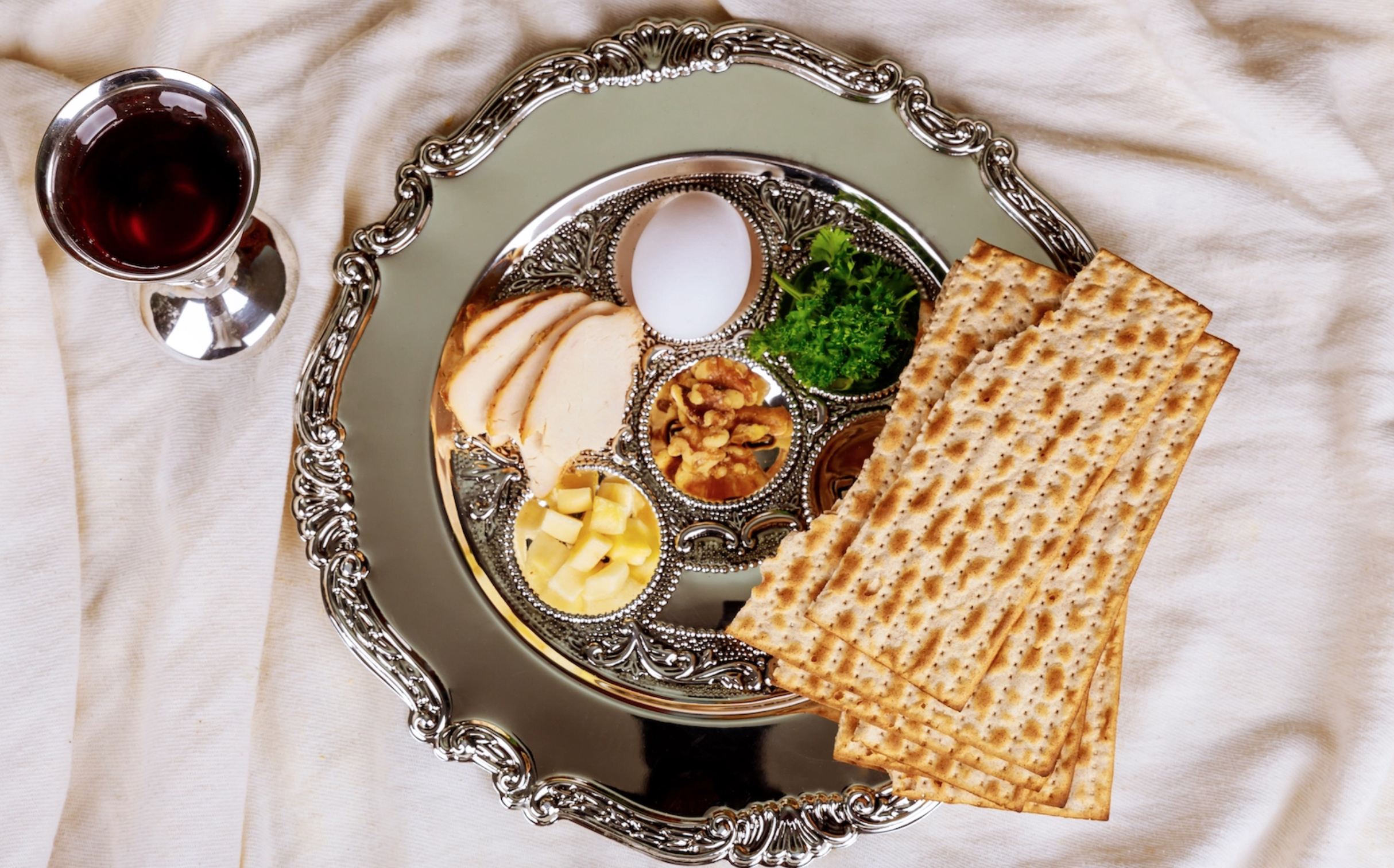What’s On Your (Passover) Plate?
-
by
admin
Creating Your Passover Seder Plate
With the Holiday of Freedom around the corner, we wanted to take a moment to ask what it is, and why it is, that we Jews do the things we do? Why do we place seemingly random foods on a plate at our Passover Seders? What is the significance of each of these items?
Preparing the Seder plate takes time and it is advised to try and complete preparation of your Seder plate before the onset of the Holiday, so as to avoid any Halachic issues along the way.
We place three matzot on top of each other on a plate or napkin. Some also have the custom to separate the matzot from each other with interleaved plates or napkins. These matzot are symbolic of the three types of Jews: the Priests (AKA Cohanim), the Levites, and the Israelites. The three measures of fine flour that Abraham told Sarah to bake into the matzah when they were visited by the three angels (Genesis 18:6) are also commemorated through the 3 matzot.
On a practical note, we need three matzot because once the middle matzah is broken, we still need two more matzot to be able to complete the blessing of Ha Motzi according to Halacha (just like Shabbat and Holidays).
On a plate placed above the matzot, we place the following foods:
Shank Bone – By preparing a piece of roasted meat, we are representing the lamb that was the special Paschal sacrifice on the evening of the exodus of the Jews from Egypt, as well as annually on the afternoon before Pesach in the Holy Temple.
Sadly, because we don’t have our Holy Temple, we can’t offer the Paschal sacrifice so we take care to use something that is similar to the actual offering. Some have the custom of using a roasted chicken neck or the like. The shank bone is not eaten. After the first night seder it is refrigerated and used the following night for the second seder.
Preparing the Shank Bone: Roast the whole neck over an open fire or on the stove top. Some have the custom of removing most of the meat of the neck.
Hard Boiled Egg – A hard boiled egg represents the holiday offering brought in the days of our Holy Temple. Eggs may be eaten during the seder meal, once the beginning prayers are complete. Some families have the custom of giving the eldest child the egg to eat.
Preparing the Egg: Boil one egg for every seder plate.
Bitter Herbs – The bitter herbs (AKA ‘Maror’) are placed on our seder plates to remind us of the bitterness of slavery our forefathers endured in Egypt. Fresh grated horseradish, romaine lettuce, and endive are commonly used as bitter herbs.
Preparing the Bitter Herbs: This must be done before the holiday. Peel the raw horseradish roots, and rinse well. Horseradish must be dried off very well. Not even a drop of water should remain. Next, grate the horseradish with a manual grater or electric grinder. If the strong bitter odor is inhaled, you may shed some tears! Wash lettuce (or endives) carefully and thoroughly checking that there are no insects on lettuce stalks.
Haroset – Symbolizing the mortar and brick made by the Jews under Pharaoh’s rule, apple, nuts and wine are made into a sweet paste like substance.
Preparing the Haroset: Peel apples and shell walnuts, chopping into a fine combination. Add a small amount of wine and mix all ingredients together.
Non-Bitter Root Vegetable – A non-bitter root vegetable symbolizes the backbreaking work we experienced in Egypt under Pharaoh’s rule.
Preparing the Vegetable: Peel an onion or boiled potato. Cut into slices and place one on the Seder plate. On the table next to the Seder plate, make sure to place a small bowl of salted water.
Lettuce – The lettuce symbolizes the bitter enslavement of our forefathers in Egypt. The stem, not the leaves, turn hard and bitter when left in the ground to grow.
Preparing the Lettuce: Wash each of the leaves separately, checking thoroughly for insects. Pat dry with a towel and let sit until dry. Lettuce must be totally dry so as not to have contact with the matzah.


